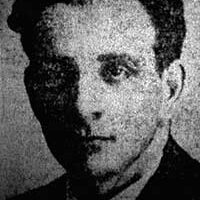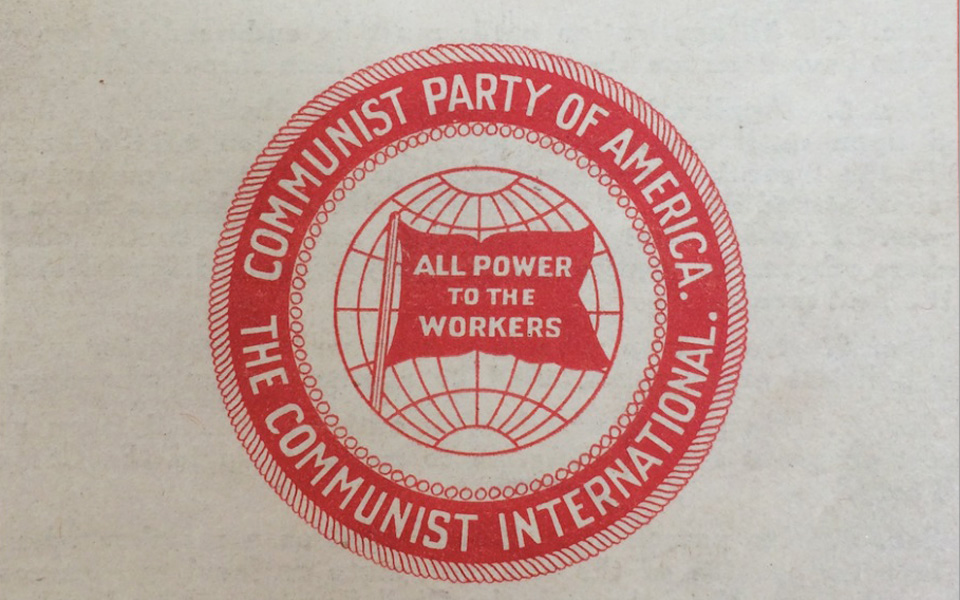
September 1st is the anniversary of the 1919 founding the Communist Party USA. Presented here is an edited selection of excerpts from Philip Bart and William Weinstone, who wrote about the CPUSA’s early years in the International Publishers book, “Highlights of a Fighting History,” published in 1979.
The Communist Party of the United States was born in Chicago on Sept. 1, 1919. This is the commonly accepted date, although actually two communist parties came into being around that date—the Communist Labor Party on Aug. 31 and the Communist Party on Sept. 1. The formation of the two parties marks the beginning of the Communist Party in the U.S. The party arose in two sections due to a split among the left-wing members of the old Socialist Party.
The Socialist Party (SP), from which the Communist Party derived, was formed in 1900. It was itself an outgrowth of socialist organizations which existed during the last quarter of the 19th century. From its inception, the SP faced opposition to the opportunist policies of its leadership. When the United States entered World War I in 1917, however, the SP could not withstand the pressures of the new situation.
War and revolution
The first imperialist world war in history changed the face of our planet. Old empires collapsed and new states emerged. Social and political storms shook every stratum of the U.S. population. The people were opposed to entering the war. President Woodrow Wilson was elected to a second term in 1916 under the slogan, “He kept us out of war.” But six months later, the United States was embroiled in the conflict. Opposition to the war was seen in the widespread strike wave during the two years in which the United States was involved. This occurred despite the efforts of the AFL bureaucracy to block militancy and win support for U.S. imperialist policy.
The war was a consequence of rivalry among the imperialist powers. The United States entered on the side of the Allies to emerge as the dominant power. A weakened Europe was left in ruins.
Revolutions swept the continent. Social Democracy, which had continuously pledged itself to oppose imperialist war, failed. The Second (Socialist) International and its constituent Socialist parties, with the exception of the Bolshevik Party, collapsed. In Russia, czarism was overthrown, and the Bolsheviks, opponents of the war, under the leadership of V.I. Lenin, established the first socialist state in history. This event, which the American author and Communist John Reed described in Ten Days that Shook the World, influenced the course of all humanity—and its effects were felt no less in the United States than elsewhere.
A strike wave and other militant activities rolled across the country. A packinghouse strike (1918) and the Great Steel Strike (1919) were both organized by the ALF under the leadership of William Z. Foster. The Seattle general strike (1919) was also under left leadership.
Black sharecroppers emigrated North to enter the basic industrial plants and developed as a significant political force in the major cities. Black soldiers returning from France faced widespread lynch terror, and demonstrated a new militant resistance.
It was in these historic circumstances that the Communist Party came into being.
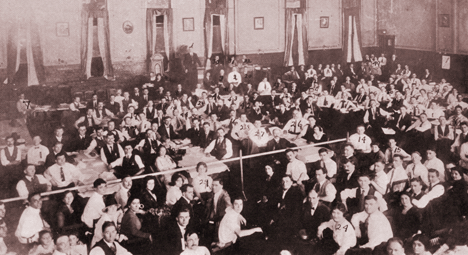
The split in Socialist ranks
The major immediate issue which led to a split within the SP was the acute discontent among the rank and file at the way the leadership had met the issue of war. The SP leadership, from the outset of the war in Aug. 1914, had opposed it, but chiefly on pacifist grounds. It exonerated the leaders of Socialist parties in Europe who had betrayed the anti-war resolutions of the Second International and supported their imperialist governments. The left wing of the SP increasingly demanded a strong working-class opposition to the war. Its influence grew following the party’s April 1917 convention, held in St. Louis shortly after America’s entrance into the war.
The SP leaders also faced criticism over their lukewarm endorsement of the Bolshevik Revolution, which occurred in November 1917. Sentiment for the revolution was high in SP and working-class ranks, but party leaders were hostile to the policies of the Bolsheviks, questioned the correctness of a workers’ revolution in Russia, and refused to join the new Third (Communist) International, founded in 1919.
The left wing carried on an intense campaign for over two years against the opportunism in the SP, seeking to change its policies and leadership. It took part in the referendum for a new SP national executive committee and swept the elections, winning 12 out of 15 seats and 4 out of 5 international delegates. But the old SP leadership, then headed by Morris Hillquit, was determined to stay in power at all costs. It refused to seat the newly elected delegates, invalidated the elections, and began a purge, expelling left-led state organizations and language federations that represented the overwhelming majority of the membership. By that arbitrary and bureaucratic expulsion, the right wing split the Socialist Party.
The National Left-Wing Conference convened in New York in June 1919, attended by 94 delegates from 20 cities representing the bulk of the SP membership. The manifesto passed at the conference accused the SP leadership of “failing to support industrial unionism and the workers’ economic struggles,” of “sabotaging the struggle against the war and opposing the Russian Revolution,” and of “generally carrying on a policy…which led not to socialism, but to the perpetuation of capitalism.”
For all its radicalism though, the manifesto failed to indict the segregation of Black members in many SP branches in the South as well as the failure of the party to take up a mass struggle against the severe oppression of Black Americans, particularly against the lynching campaign then raging in the South. It was an omission which was only corrected some time later.
Parties of a new type
The delegates to the National Left-Wing Conference were divided, however, in how to approach their expulsion from the SP. One caucus, with John Reed and Alfred Wagenknecht among its leaders, was determined to take the seats to which they had been elected and made plans for regaining control of the SP at its August convention. Others, with Louis C. Fraina and eventually Charles Ruthenberg at their head, decided to embark on the establishment of a new revolutionary party, free of ties to what they saw as the opportunist SP. They set Sept. 1, 1919 as the date for the foundation of the Communist Party of America (CPA).
When Reed and others from the left wing showed up at the SP convention on Aug. 31 to take their seats as delegates, they were met with the full force of the party leadership’s vengeance. The executive called in the Chicago Police, who proceeded to eject the leftists from the hall.
The group marched downstairs to a room just below the SP convention hall and immediately constituted themselves, on the spot, as the Communist Labor Party (CLP). They had bested the other communist party’s founding by one day.
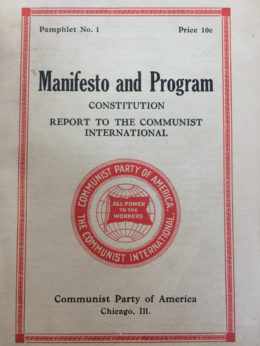
William Z. Foster, who eventually became one of the Communist Party’s most prominent leaders, would later say that the two young parties “expressed the aspirations of the old left for a class struggle policy but also reflected the latter’s sectarianism.” He wrote, “It was sectarianism, tendencies to exaggerate differences, and doctrinairism on the part of a number of the party leaders and some of the language federations which accounted for the split” between the two groups.
It was a mistake, Foster would argue, not to attend the SP convention as a united group. Even though the delegates who tried were summarily thrown out by police, “it was important to attend, if only to expose the bureaucracy of the leadership and to clarify the program of the Left wing fully before the Socialist movement of the country and the delegates of the SP convention, many of whom hesitated between the Right and Left.”
At any rate, it would be a few years before the two Communist parties were to unify. Separately, they proceeded to organize their ranks, enrolling the left-wing forces of the SP. They were joined also by forces from other organizations in the general process of realignment of revolutionary elements. Among them were some Socialist Labor Party leaders, a number of Black leaders attached to Socialist journals and revolutionary organizations, young Socialist leaders, prominent women Socialists, and others.
From division to unity
The Communists fought courageously in court for their principles and for democratic rights of free speech and assembly. They went on with their work of organization despite their virtual illegality. But the terror of the first Red Scare and the two parties’ own narrow political tactics greatly reduced the membership of both.
Ruthenberg, general secretary of the CPA, wrote in the April 1920 issue of The Communist that to be a party of action, the Communists must participate “in the everyday struggles of the workers and by such participation inject their principles and give a wider meaning, thus developing the Communist movement.” It was, ideologically, an important step away from the narrow sectarianism of the year before. Ruthenberg and other leaders of the CPA not only favored this outlook, but, together with Alfred Wagenknecht, general secretary of the CLP, and others, undertook negotiations which led to the unity of the two parties and the formation of the United Communist Party in 1920.
At this time, Lenin’s “Left-Wing” Communism: An Infantile Disorder made a powerful impact upon Communist leaders and members. It helped enormously to make the break with “left” sectarianism and to recognize the need for the closest possible contact with the masses in the party’s work.
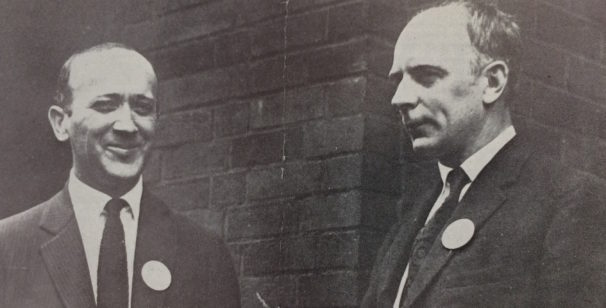
Soon after, the United Communist Party took the path of breaking its isolation and taking up broad mass work. New strength came from the adherence of a group of former Industrial Workers of the World (IWW) members, headed by Big Bill Haywood, general secretary of the IWW, who joined the party in 1920. A considerable number of experienced trade unionists who had formed a left trade union opposition in the AFL, headed by Foster, joined in 1921.
On Dec. 21, 1921, the Workers Party was established as a “legal” means of carrying on public activity and of reaching broader sections of the working class. By 1923, its membership rose to about 16,000. Conditions of illegality were lifted as the political situation stabilized in the country, leading to proposals to dissolve the underground Communist Party.
The vote on liquidating the dual structure at the August 1923 party convention in Bridgman, Michigan was evenly split. When its deliberations were almost at a close, it was raided by the FBI. Seventeen delegates were arrested, including Ruthenberg. Forty more were later jailed, including Foster. Both were tried under the Michigan criminal syndicalist law, Ruthenberg being convicted and Foster released because of a divided jury. He was not retried, nor were the others. Their cases were finally dropped in 1933.
The aim of the government in making the raid was not only to keep the Communist Party illegal and to restrict the activities of the newly formed Workers Party, but also adversely affect the big strikes then in progress.
The party boldly seized on the situation, however, to achieve its desired goal of a complete public existence. On Apr. 7, 1923, the Communist Party declared its full consolidation with the Workers Party. Thus the “underground” period of the Communist Party came to an end. The Workers Party changed its name to the Workers (Communist) Party in 1925 and to the Communist Party of the United States of America (CPUSA) in 1930.
For more on the history of the CPUSA, check out:
Faith in the Masses: Essays Celebrating 100 Years of the Communist Party USA
Available from International Publishers.




